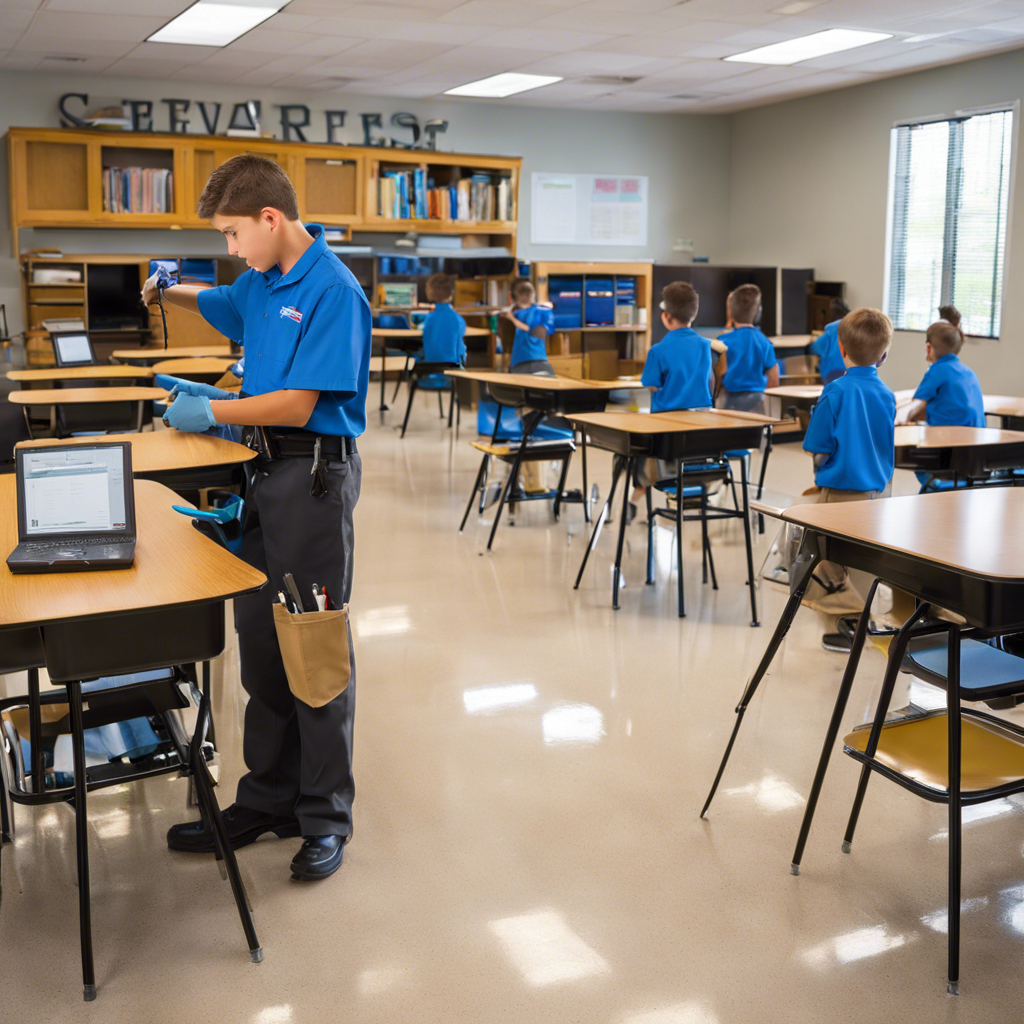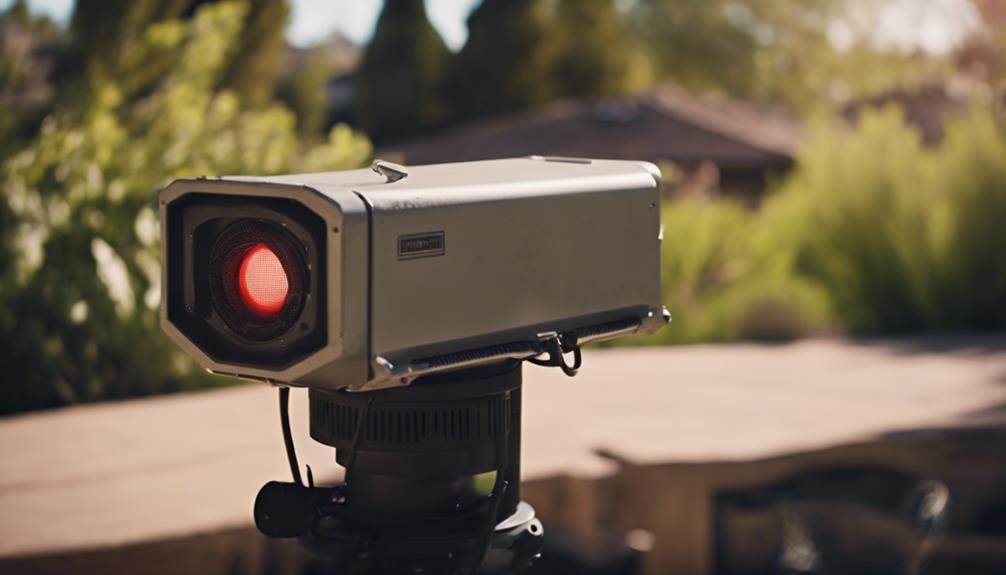The role of pest control in St. George schools and educational facilities is of utmost importance in ensuring the well-being and safety of students and staff.
Pests can pose significant health risks, such as the transmission of diseases and allergies. By implementing effective pest control measures, schools can prevent infestations and the proliferation of hazardous species.
It is crucial for educational facilities to collaborate with reputable pest control companies and integrate pest control education into the curriculum, engaging students in prevention and control methods.
Taking proactive steps in pest management allows educational institutions to create a secure and healthy environment conducive to learning.
Key Takeaways
- Ensuring the health and safety of students, staff, and faculty is a crucial aspect of pest control in St. George schools and educational facilities.
- Preventing infestations and the spread of hazardous species is a key benefit of implementing effective pest control measures in educational settings.
- Collaborating with reputable pest control companies is essential for successful pest management in schools.
- Integrating pest control education into the curriculum helps students and staff understand the importance of pest control and how to prevent infestations.
Importance of Pest Control in Educational Facilities
Pest control plays a vital role in maintaining the health and safety of students, staff, and faculty in educational facilities in St. George. Regular inspection and assessment are necessary to identify any pest problem and take a proactive approach to prevent infestations.
Educational facilities, being susceptible to pests due to the high volume of people and food sources, must implement effective pest control solutions to ensure a pest-free environment. Pests such as rodents, cockroaches, and bed bugs can pose serious health risks, including allergies, asthma, and the transmission of diseases.
Controlling pests in educational facilities involves employing various methods, including the use of Integrated Pest Management (IPM) techniques, which focus on prevention, monitoring, and treatment.
Risks of Pests in St. George Schools
The presence of pests in St. George schools poses significant risks to the health and well-being of the students, staff, and faculty.
Pests, such as rodents and cockroaches, can carry dangerous diseases and viruses, increasing the potential for illness and allergies within educational facilities.
Children, being more vulnerable, are at higher risk of suffering from the bites and droppings of pests, which can lead to respiratory problems, skin irritations, and even mental health issues like anxiety and stress.
Moreover, pest infestations in schools can result in the breeding of hazardous species and the contamination of food, further exacerbating health concerns.
To mitigate these risks, regular pest inspections and assessments should be conducted in St. George schools to identify and address potential infestations, ensuring a safe and healthy environment for all.
Health Hazards Associated With Pests in Schools
Numerous health hazards are associated with the presence of pests in schools. Pests such as mosquitoes, ticks, and rodents can pose significant risks to the health and well-being of children in educational facilities. For instance, pest bites can cause symptoms ranging from pain and discomfort to more severe outcomes such as nausea and cramping.
Additionally, certain pests have the potential to transmit diseases such as malaria, dengue fever, and Lyme disease, further emphasizing the importance of pest control in schools. Allergic reactions to pest bites or droppings can also lead to respiratory problems and skin irritations.
The mental health of students can also be affected by infestations, leading to increased anxiety and stress. To mitigate these risks, schools and educational facilities require a specific plan that incorporates a scientific approach, including regular inspection and assessment, and a pest control strategy that is tailored to the unique challenges of educational environments.
Legal Implications of Not Implementing Pest Control
Failure to implement proper pest control measures in St. George schools and educational facilities can result in significant legal ramifications. Educational institutions have a responsibility to provide a safe and healthy environment for students and staff. Neglecting pest control puts this responsibility at risk and can lead to severe consequences.
One of the legal implications of not implementing pest control is the potential spread of diseases carried by pests such as cockroaches and bed bugs. These pests are known to transmit various illnesses, including allergies, asthma, and skin infections. Inadequate pest control can also lead to health department violations, resulting in fines or even closure of the educational facility.
Regular inspections and a comprehensive pest control program are essential to prevent and address pest issues. By partnering with a professional pest control provider that offers a scientific approach to pest management, St. George schools and educational facilities can ensure the control of their pest problems.
Implementing a proactive plan for pest control not only mitigates legal risks but also helps maintain a healthy learning environment for all.
Effective Strategies for Pest Management in Schools
To effectively manage pests in schools, it is important to establish a comprehensive pest management plan. This plan should outline specific strategies for pest control in St. George schools and educational facilities.
One effective strategy is regular inspection of the premises to identify and address any potential pest issues. This allows for early detection and prevention of infestations, minimizing health risks to children and staff.
Additionally, collaboration with a trusted pest control company can provide professional guidance and solutions tailored to the unique needs of educational facilities.
The plan should also incorporate pest control education into the curriculum, involving students in prevention and control methods.
Frequently Asked Questions
Why Are Pest Such a Problem in Schools?
Pests pose a significant problem in schools due to their potential to cause health hazards, structural damage, food contamination, allergies, and asthma. They can disrupt the learning environment, damage the school’s reputation, and raise safety concerns. Additionally, pests can transmit diseases, leading to the need for costly pest control measures.
What Is the Role in Pest Control?
Pest control plays a crucial role in maintaining school health and safety by implementing integrated pest management strategies. This includes pest prevention, thorough pest inspections, and effective pest control measures to eradicate infestations and create pest-free learning environments.
How Can an IPM Program Contribute to a Healthy School Environment?
Implementing an Integrated Pest Management (IPM) program in schools promotes student well-being by preventing health risks, minimizing pesticide use, and promoting environmental sustainability. Educating staff and students, early detection and prevention, and collaborating with parents ensure long-term benefits and cost-effective solutions.
When Should Pesticides Be Used at School?
Pesticides should be used at school when unmanaged pest issues pose health hazards. Integrated pest management, incorporating pest prevention, identification, monitoring, and safe pesticide use, helps schools comply with pest control regulations and minimize health risks while considering the environmental impact.




